Designer founders on pain-hunting, seeking competitive markets, and why now is the time to build
Phil Vander Broek of Dopt and Filip Skrzesinski of Subframe share hard-earned lessons on getting honest about customer signals, moving faster, and the shift from designing products to companies.
AI has fundamentally shifted the playing field for designers who want to build products. With the tools available today, you can ship faster and with smaller teams than ever before, no longer constrained by eng bottlenecks or lengthy approval processes. The question isn’t just whether this changes everything for designers who want to start companies, it’s whether you'll move fast enough to take advantage of this historic moment.
Phil Vander Broek and Filip Skrzesinski offer two vantage points on this shift. Phil’s first startup, Dopt, was acquired last year by Airtable, where he now leads AI design. Filip is in the thick of building Subframe, a new UI design tool. One has the perspective of having been through the full cycle, while the other is building in real time.
What connects them is the conviction that good products come from understanding what’s actually worth building, and the shared belief that AI has created a brief window of opportunity for designers that won't last forever.
What you’ll learn from Phil and Filip:
Why early discovery should focus on pain-hunting, not validation
How to get honest about customer signals and urgency
Why picking a bigger, competitive market can be the smarter move
What it really means to design a company, not just a product
Why designers should take advantage of this AI window
1. Go pain-hunting to figure out what to build
Phil Vander Broek and his co-founders had everything going for them: eight years of shipping products together at Dropbox, Amplitude, and Productboard, plus the deep trust that comes from that shared history. Their first startup idea—a pandemic-inspired collaboration tool—fell apart in weeks.
“The space was crowded, the signals were weak, and conviction disappeared,” Phil recalls.
A former colleague gave him simple advice: restart discovery and ask people for their top three problems. No pitching, just pain-hunting. That single prompt led them to scrap everything and run a proper discovery process.
They ran 60+ interviews in three waves. The first 20 conversations with product and growth leaders surfaced a shared pain point: driving user adoption was painfully hard, and existing tools felt bolted on. The next 20 calls helped shape a potential solution through mockups and prototypes—one engineer was so interested he volunteered for weekly co-design sessions. A final batch of 20 calls confirmed their ideal customer was engineers, not PMs.
“That discovery process gave us the conviction in the opportunity and the story to close our seed round,” Phil says. "The false-start forced us back to first principles."
The result was Dopt: a product adoption platform used by companies like Superhuman and Productboard to build onboarding flows and in-product assistance.
The takeaway: Don’t interview to validate your idea. Do it to find an idea worth validating. Phil’s team could have saved months by being more ruthless about abandoning their first concept.
2. Don’t slow down after discovery
Phil's biggest lesson: Even with a solid discovery process, there were opportunities to move faster. Each phase of learning could have been more compressed, with decisions that stretched into months when they might have taken weeks.
Before product-market fit, you’re racing to answer three questions: Who are you building for? What pain do they desperately need solved? Can you deliver something distinctly better they’ll pay for?
At Dopt, those questions unfolded in three phases: first, learning that while engineers were the users, PMs were actually the buyers; evolving the product to actually solve adoption problems for PMs; and finally re-imagining it with AI to unlock in-app assistance. Looking back, Phil wishes they’d moved through each phase faster.
So what does moving fast actually look like? Phil points to two things:
Be ruthlessly honest about signals. “We should’ve been more honest about whether users were banging on our door or putting skin in the game.” That means talking to customers every week and looking for signs of urgency. Are they offering feedback unprompted? Committing to a pilot? Signing on as design partners? If not, it's time to reassess your assumptions.
Launch more often. “Get the word out until something resonates and sticks and users start coming.” Don’t wait for perfect positioning. Momentum comes from shipping and seeing what gets a real response.
The takeaway: Speed of learning beats perfection of process. The market will teach you faster than any amount of internal deliberation.
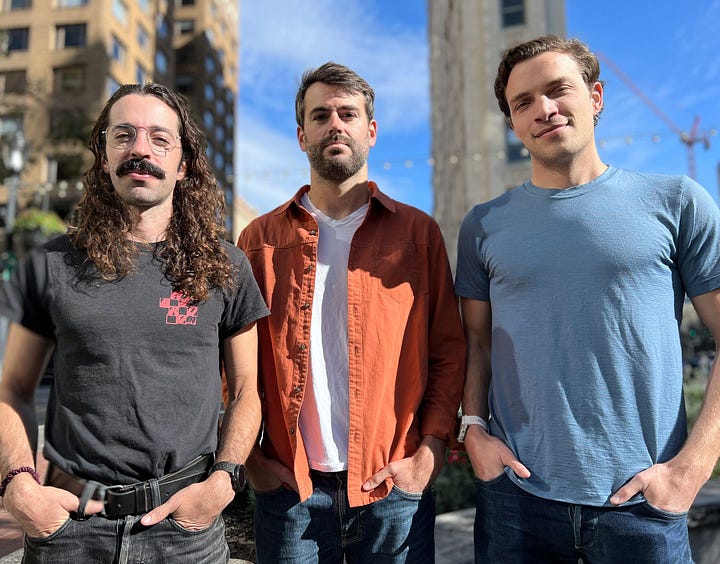

3. Pick a market that pulls you forward
Even with the right problem and strong execution, Phil now believes there might have been opportunities to scale faster had they chosen a different market from the outset. Looking at other companies in Dopt’s cohort, many were solving problems for go-to-market teams, customer support, or building pure developer tools—massive, proven markets where the pain is often urgent, budgeted, and well understood.
“They’re competitive, for sure,” Phil reflects, “but I’ve come to believe that can actually be a feature, not a bug. Competition often just means there’s real demand, and in many of these categories, there’s still plenty of room to build something better or more focused—especially now with how AI is reshaping workflows.”
The moment his team began to realize their market might not be as urgent as they'd hoped was when they kept hearing some version of: “This is a big problem for us…but it’s not on the roadmap right now.”
“We got that over and over again,” Phil says. “Teams liked what we were doing, but because implementation required developer time, it often got deprioritized. That kind of delayed urgency is tricky. It introduces friction unless you have enormous volume or extremely high pricing, neither of which we had in the early days.”
This lack of urgency didn’t hurt their early fundraising, as investors were excited by the idea of a new platform for driving product adoption, but it did make long-term momentum harder to sustain.
With Dopt, it wasn’t just a positioning issue—it was more foundational: what should the product be, and who exactly is it for? They aimed to serve both PMs and developers, which reflected a real shared problem, but also created challenges around focus and go-to-market clarity.
“In hindsight,” Phil says, “we optimized for uniqueness in an area where the pain was very real but wasn’t on this quarter’s roadmap enough. Today I’d hunt for the same depth of problem—but inside a market already flush with budget and urgency, even if that means wading into heavier competition. When a huge number of customers are actively searching, you get free tailwinds, faster cycles, and cleaner data on what’s working.”
The takeaway: Choose a larger market with burning pain, even if it means more competition. It’s much easier to build momentum when your customers are already urgently looking for a solution than trying to carve out a niche in a quieter market.
4. Start a company in spite of your love of designing products
Filip Skrzesinski didn't leap into founding a company—it was “slow fermentation.” Years of working with systems: process-driven artwork, Markov chains before LLMs, visual languages built from component libraries and brand identities.
He left his job with no plan and no safety net, but realized he’d already been quietly working toward this moment for years. When he met his co-founders Irvin and Adam, it clicked immediately. Subframe started as a compulsion by people just crazy enough to build a better design tool from scratch.
But here’s Filip’s counterintuitive advice: “Don’t start a company because you love designing products. Do it in spite of that.”
“You won't be designing in the traditional sense—you’ll be designing the company’s DNA,” he explains. “It’s the invisible work: how you organize, how you think, how you make decisions. How it feels to work there, to use what you're making, to believe in it.”
The day-to-day reality becomes shipping quick fixes, sending outreach messages, releasing product emails, writing docs. All tasks eventually get delegated, automated, or made irrelevant. But the hard work is deeper. It’s cultural. It compounds.
“In the end, you’re signing up for something bigger than designing a product. Do it because you want to design things that outlive you.”
The takeaway: Before you start a company, ask yourself: Are you excited about designing products, or designing how a company thinks, decides, and feels? If it’s just the former, consider staying in a design role.
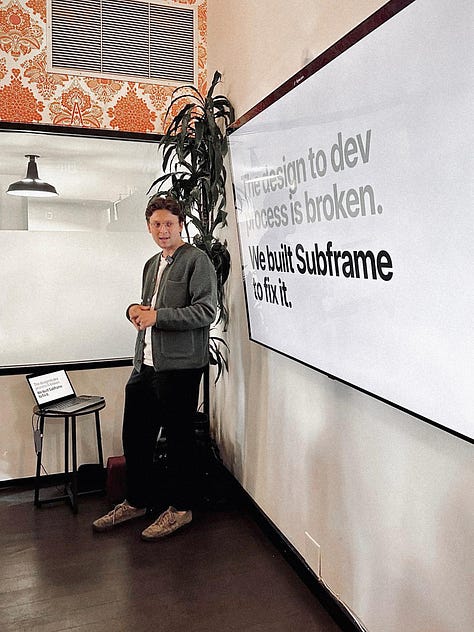
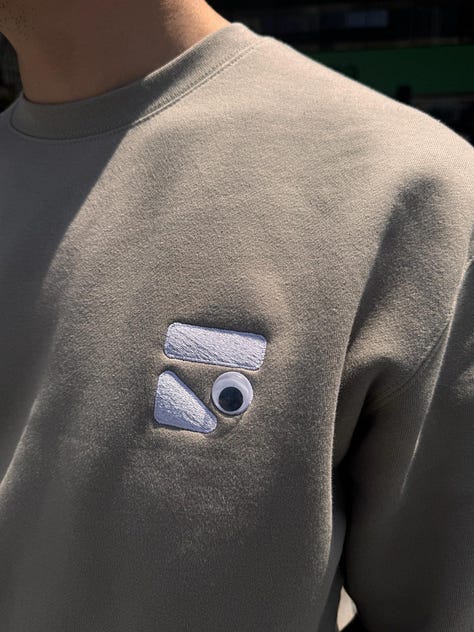
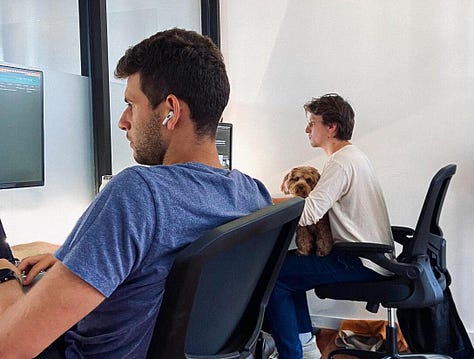
5. Know when to go with your gut and when to just ship
Filip’s first job was working for Justin Maxwell, a designer-founder who became his mentor. “I saw the unglamorous side of early startups: you're in a windowless office, letting go of brilliant ideas that fizzle, and still showing up the next day to try again.”
But he also learned “the toolkit every designer-founder ends up reaching for: intuition, craftsmanship, and delusional confidence. You reach for these when you have no data, no traction, and no idea where you’re going—especially then.”
Above Justin’s desk was a quote from Charles Eames: “Innovate as a last resort.”
“Most of the time, this is the move,” Filip says. “Ship the defaults, optimize for speed. Intuition is a catalyst, but I like to say ‘I don’t know’ a lot. Shipping is knowing.”
But it’s a balancing act. At Subframe, some details matter deeply: “We're designing a tool people work in all day, so how drag and drop feels, how microinteractions enable flow states—that matters.”
Other times, you pursue ideas born from raw, long-term conviction, even when they look contrarian: “like rethinking how designs get handed off as code, or resisting chat-based AI to find more nuanced, contextual interactions.”
The key is knowing when to reach for the right tool. Where you choose to focus is also what you’re choosing to ignore.
The takeaway: Save invention for what truly needs it. Most of the time, shipping fast beats being clever. As Filip puts it: “What do I wish I’d known? When to reach for the right tool. And I’m still learning.”
6. Why more designers should build now
Both Filip and Phil see this moment as uniquely urgent for designers.
Filip frames it as a generational shift: “Designers have founder instincts. But for a long time, the market didn’t reward design because building software was hard. The empathy, care, and clarity designers bring got filtered through technical constraints.”
Those barriers are collapsing. For the first time, designers have direct access to software as a medium, controlling not just how it looks, but how it works. "You’re not just building with frontier models; you're competing with them. This is the first time technology might outrun my imagination."
Phil sees the same gap: “AI’s raw capabilities are racing ahead while the experience layer lags far behind. Creating AI products that feel amazing and trustworthy demands new design patterns the old playbooks can't provide.”
This is where designers have their edge. “Designers bring the taste, judgment, and craft to invent those patterns and can bake them into a company’s culture from day one,” Phil explains. “I think it’s an amazing time to be a design founder.”
The takeaway: Now is the time for designers to start companies. AI has removed the technical barriers that once required permission or extensive resources. Start building now while the experience layer still lags behind raw capabilities.
Be ruthlessly honest about early signals. Are customers banging on your door or putting skin in the game? If people aren’t offering up their time or reputation (e.g. unprompted feedback or committing to a pilot), it might be time to reassess.
Choose markets that pull you forward. Phil’s insight: “I’d hunt for the same depth of problem, but inside a market already flush with budget and urgency, even if that means heavier competition.” When customers are actively searching, you get natural tailwinds.
You’re designing a company, not just a product. The real work goes deeper than product design. As Filip puts it: “You’re designing the company's DNA—how it feels to work there, to believe in it.” Tactical work gets delegated; cultural work compounds.
The AI window won’t stay wide forever. AI has removed technical barriers while the experience layer lags behind. Both founders see this as a historic but brief opportunity. The question isn’t whether to start, it’s whether you'll move fast enough.
Recently added to DesignerFounders.com: Jony Ive, Julie Zhuo, Danqing Liu
Omada Health went public last week—our first portfolio company to IPO 🥺
We also joined Linear’s Series C!
Carly Ayres on why everyone is suddenly so thirsty for designers
Weavy launched with a node-based approach to AI image and video creation, combining multiple AI models in one tool. Watch our demo to see it in action
Soleio and Indie.VC released a new video series featuring design pioneers at the frontiers of tech, designer founders included





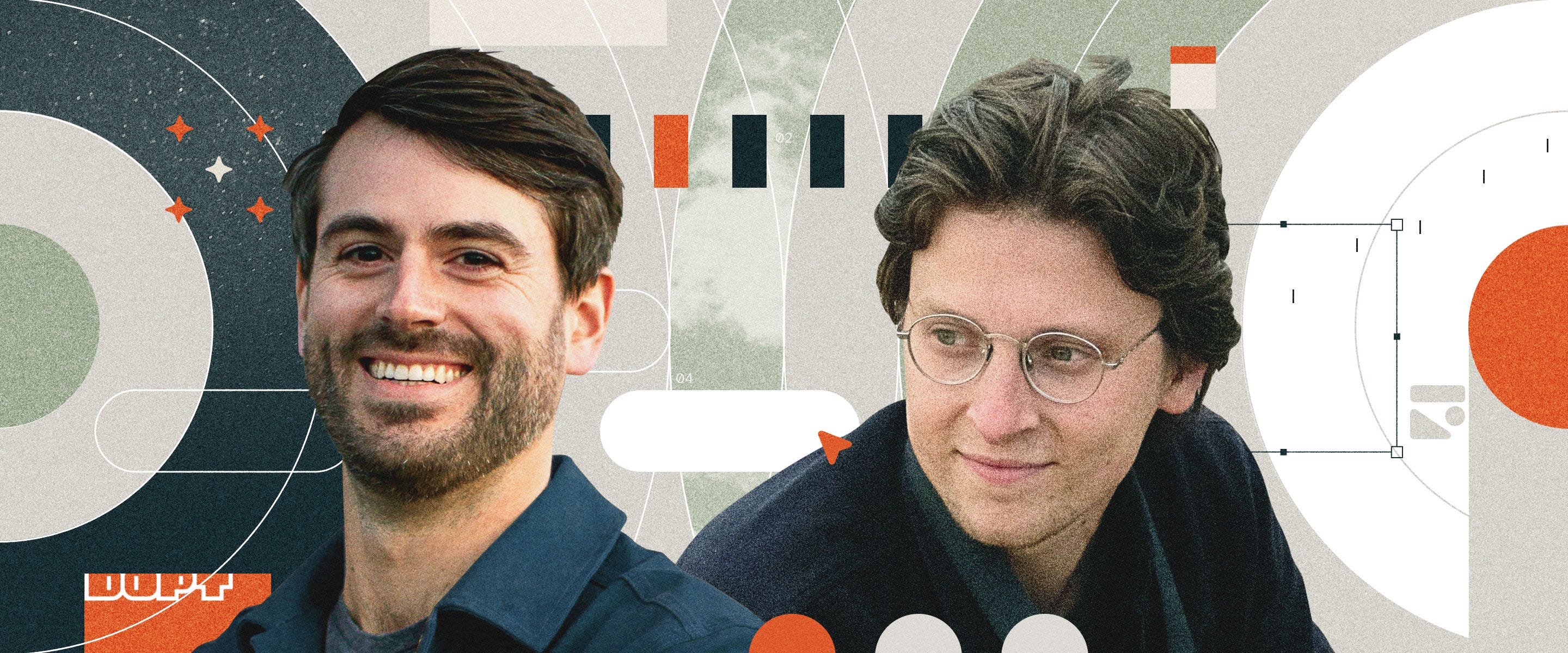
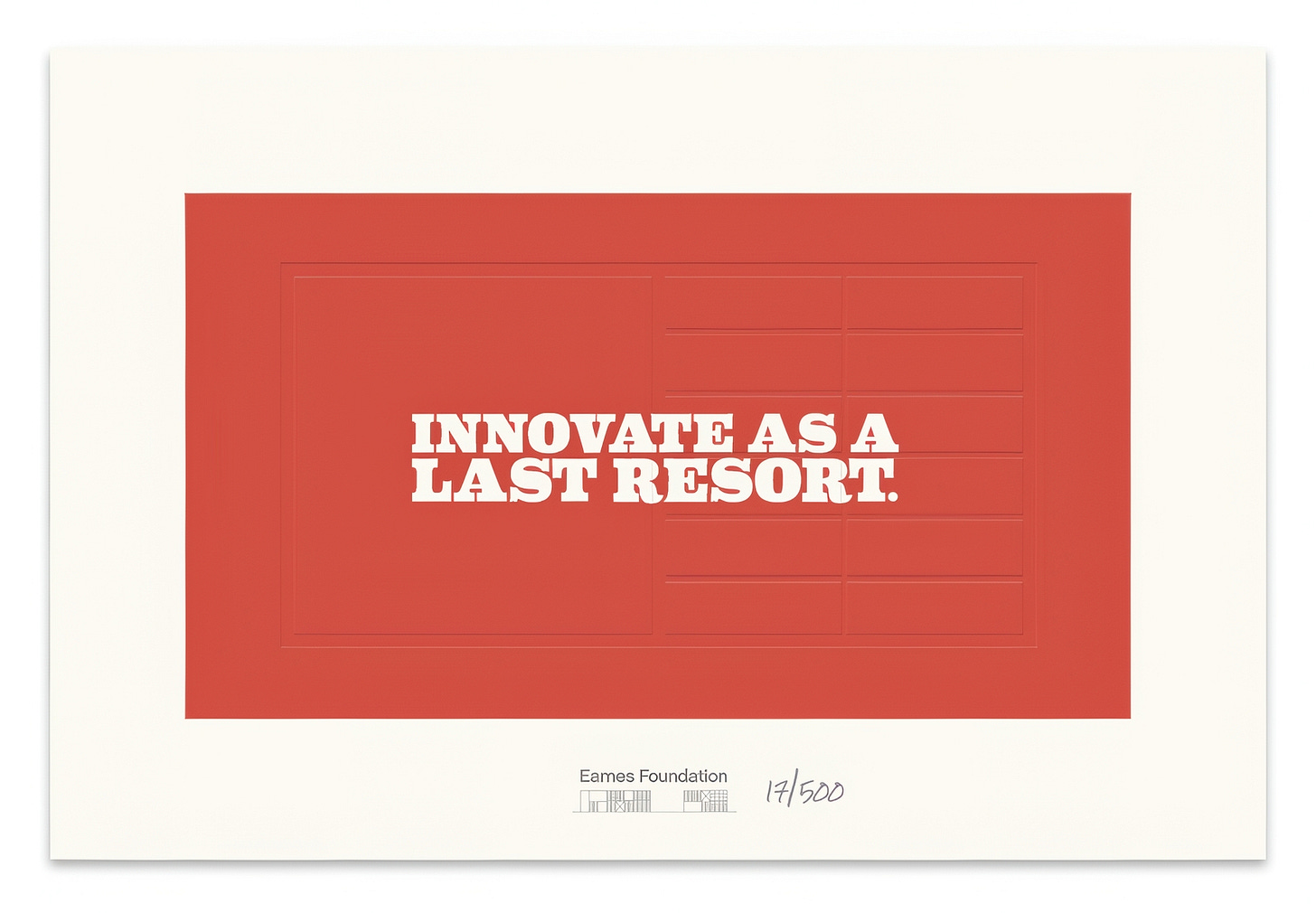


I like the photo with the design behind it